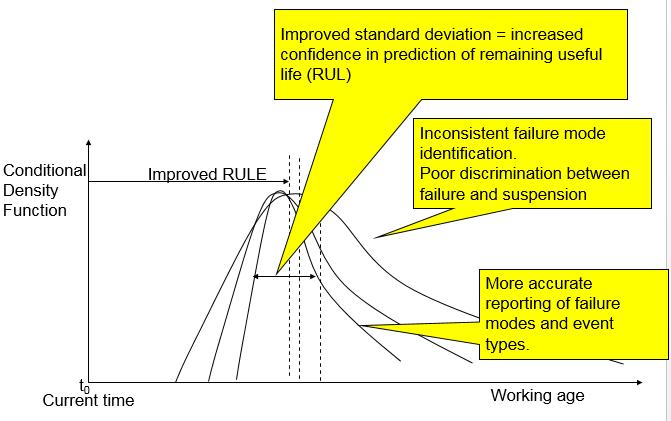I am interested in knowing more on your decision tool around CM (Condition Monitoring) prognosis and when to intervene in corrective maintenance. I want to look at different ways of removing subjective decisions and use more of an objective method given the complexity of information surrounding critical productive equipment. As we have many mines around the world, I wanted to see if there was a tool that can be easily used to making decisions around maintenance intervention.
You raise precisely the right themes, namely: 1. “objectivity” in the context of 2. “complex” information” used in 3. “making decisions around maintenance intervention”. Let’s take them in sequence. Objective decision making flows from the analysis of information having two obvious yet critical characteristics: accuracy and relevancy. Obviously, we require accurate information on our asset’s observed failure behavior if we wish to use that information to develop a practical decision procedure. The EAM was supposed to fill the accuracy requirement. Yet many reliability analysts assert that work order data lacks consistency, accuracy, and completeness. Accuracy requires that the EAM provide the types of data that a Reliability Analysis (RA) needs for using an evidence based decision tool.
A decision tool is a method for building a decision model. A decision model is a rule or algorithm for making recurring decisions. It is inconceivable that a maintenance analyst would decide each maintenance action by invoking first principles. He does not have the time to eyeball every CM graph, perform a calculation, and arrive at a considered decision on whether to intervene. Therefore a model will be used to support or automate the decision process. A model can invoke varying degrees of objectivity from “gut feel” to full statistical rigor. The vital question, however, is this: “Does the model result in decisions that, over the long run, support in a verifiable way the reliability, availability, and cost objectives set for an asset?
Begin by defining a CM decision. A condition based maintenance (CBM) decision invariably boils down to a recurring choice among three possibilities:
- Intervene immediately and perform maintenance on a specific part or component.
- Schedule, within a specified time, an intrusive inspection or specified maintenance on a component or part.
- Defer the decision until the next CM observation.
Going one step further, we need to determine whether our decision process is optimal? Does the process result in the best desirable balance between proactive and reactive maintenance so as to maximize some objective, typically profitability.
Our initial axiom stated that the information used for constructing our decision model must be accurate and relevant[1]. Accurate data in the EAM database depends on the technician’s:
- Selecting of the correct observed failure mode(s) on the maintenance work order.
- Correctly designating the failure mode’s end-of-life event as one of:
- Functional failure,
- Potential failure, or
- Suspension (i.e. preventive renewal)
What happens when decision models are built on EAM data that lacks accuracy? The CM decision model performs poorly. Performance may be measured by the standard deviation around a mean known as the Remaining Useful Life Estimate (RULE). A large standard deviation means low confidence in the RUL prediction. The model will not perform optimally. EXAKT[2] decision models will under perform in the manner illustrated graphically below.
CM decision tools, to be effective, must be supported with good EAM data.[3] The Living RCM methodology enables EAM users to ensure analysis quality work order data from shop and the field technicians. More information on LRCM is given in the article Achieving reliability from data.
© 2015, Murray Wiseman. All rights reserved.
- [1]Relevant data refers to monitored variables that contain predictive capability. That is, the data, in some way relates to failure probability. Highly relevant condition monitoring data correlates closely with failure probability. Less relevant data correlates less well and requires a larger statistical sample for practical and effective decision models.↩
- [2]Examples of the use of the EXAKT CM decision modeling system are given here. The theory of EXAKT can be found here.↩
- [3]See also Confidence in predictive maintenance↩

